This pub takes its name from its famous namesake which was in nearby Wych Street, off Drury Lane, frequented by actors and literary figures, such as Charles Dickens. The writer Mark Lemon spent several years as the pub’s landlord and later founded Punch magazine, which he edited for nearly 30 years, until his death in 1870.
A framed painting from a Shakespeare play.
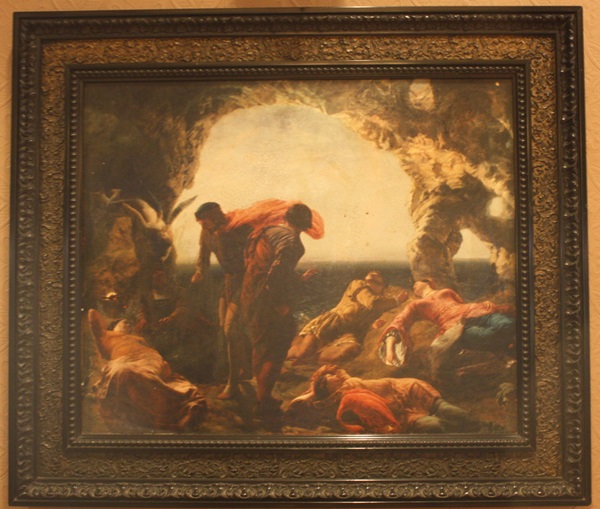
A framed painting of Shakespeare and acquaintances.
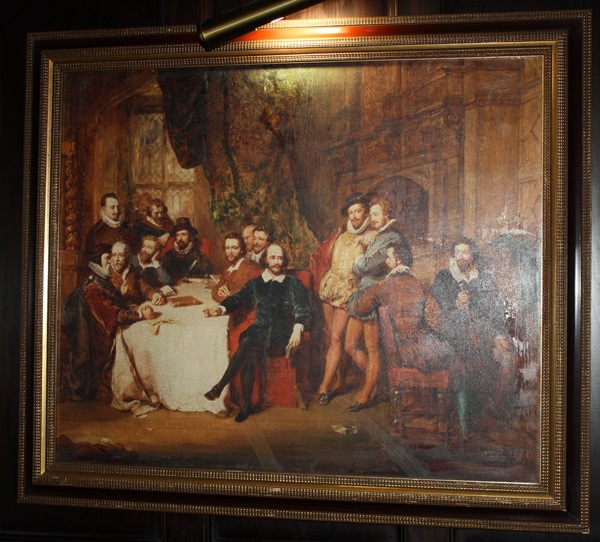
A framed painting of Shakespeare.
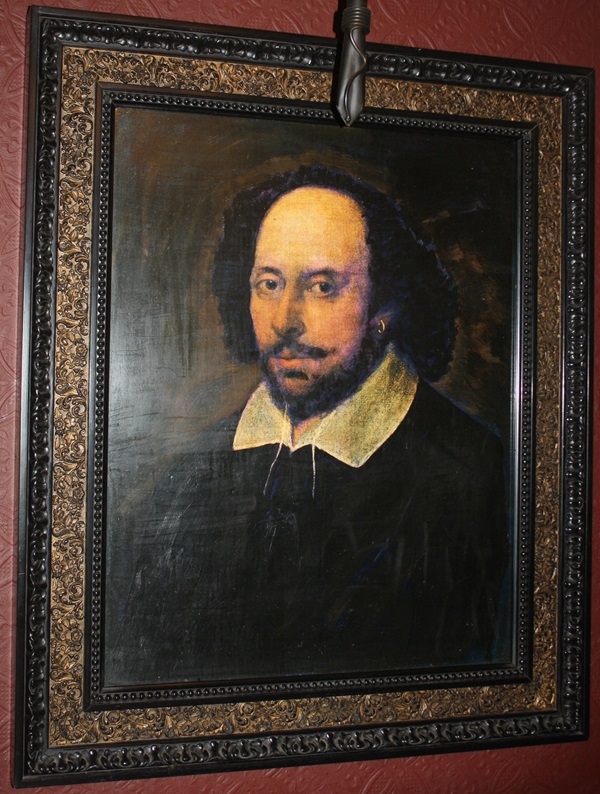
A framed painting from Othello.
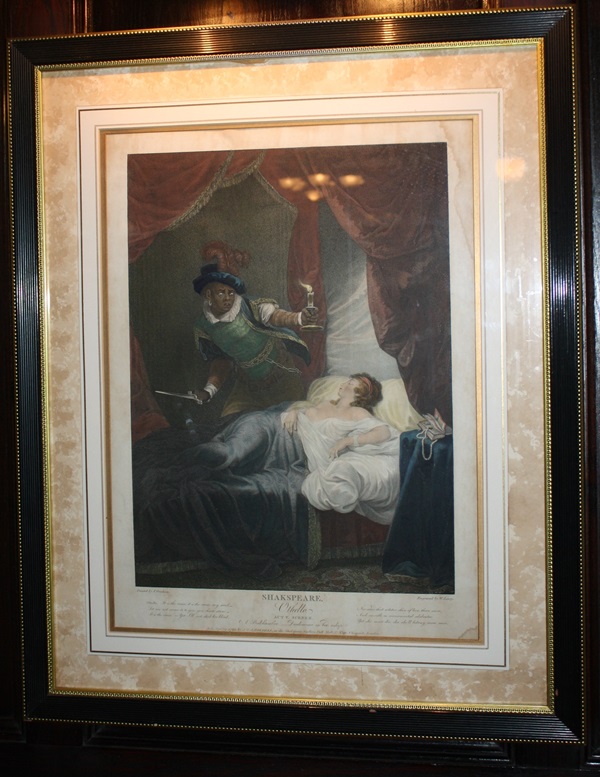
The painting is a scene from Act V, Scene II of Othello. It is painted by J Graham and engraved by W Leney. The text reads: It is the cause, it is the cause, my soul.
Let me not name it to you, you chaste stars, It is the cause. Yet I’ll not shed her blood, Nor scar that whiter skin of hers than snow
And smooth as monumental alabaster. Yet she must die, else she’ll betray more men.
A framed painting from Titus Andronicus.
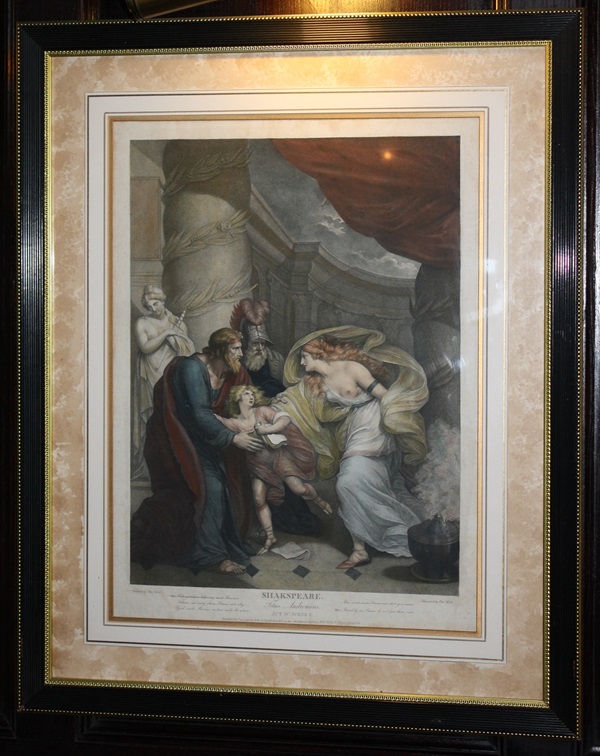
The painting is from Act VI, Scene I of Titus Andronicus. It is painted and engraved by Thomas Kirk. The text reads: Help, grandsire, help! My aunt Lavinia follows me everywhere, I know not why. Good uncle Marcus, see how swift she comes. Alas, sweet aunt, I know not what you mean. Stand by me, Lucius, do not fear thine aunt.
A framed painting from King Henry the Fourth.
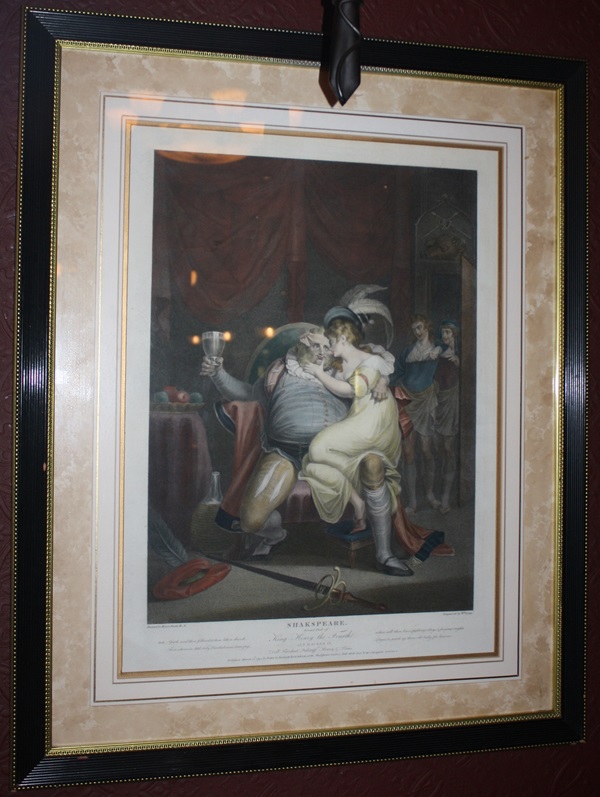
The painting is from Act II, Scene IV in the second part of King Henry the Fourth. It was painted by Henry Fuseli and engraved by W Leney.
A framed drawing of a statue – The Alto Believe.
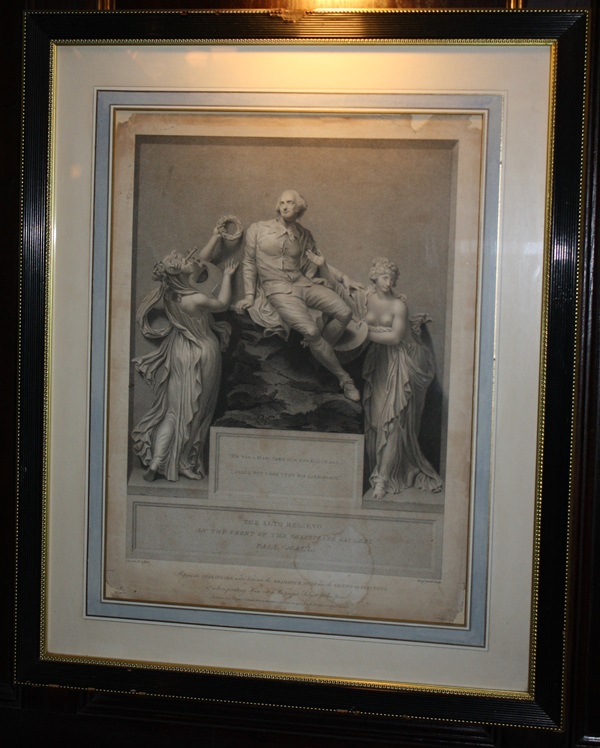
The statue is in front of The Shakespeare Gallery (1798–1805), Pall Mall. The statue reads: “He was a man, take him for all in all. I shall not look upon his like again”.
A framed drawing of Bardolph.
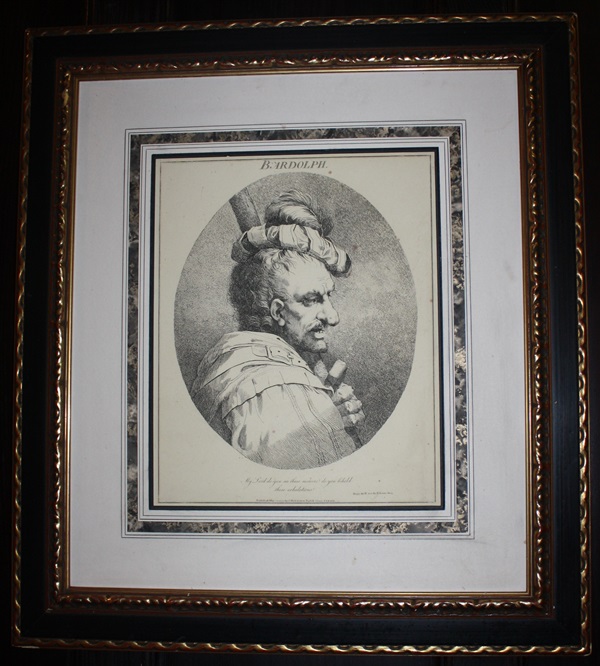
A drawing of a Shakespeare character – Bardolph. The text reads: My Lord do you see these meteors? Do you behold these exhalations?
Henry the IV Act the II Scene the 9.
Published May 20, 1775 by J Mortimer, Norfolk Street, STRAND.
A framed drawing of York.
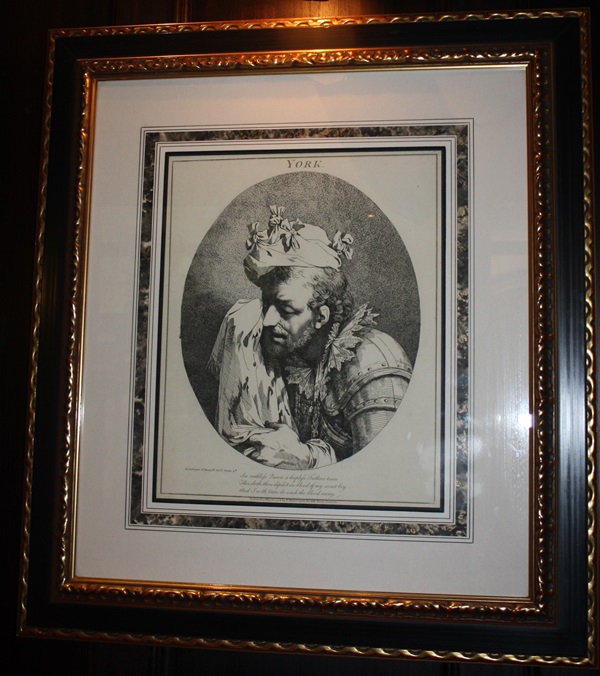
A drawing of a Shakespeare character – York. The text reads: See ruthless Queen a hapless Father’s tears. This cloth thou dip'dst in blood of my sweet boy, And I with tears do wash the blood away.
Second part of Henry the IV Act the II Scene the 9.
Published May 15, 1776 by J Mortimer, Norfolk Street, STRAND.
A framed painting from The Two Gentlemen of Verona.
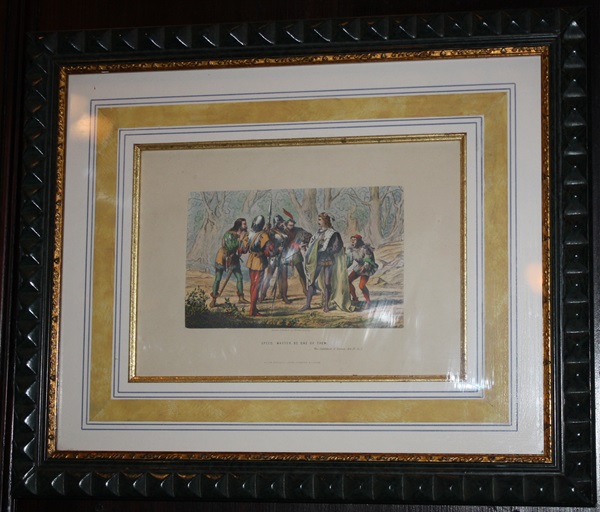
The painting is from Act IV, Scene I of The Two Gentlemen of Verona.
A framed poster advertising The Merry Wives of Windsor.
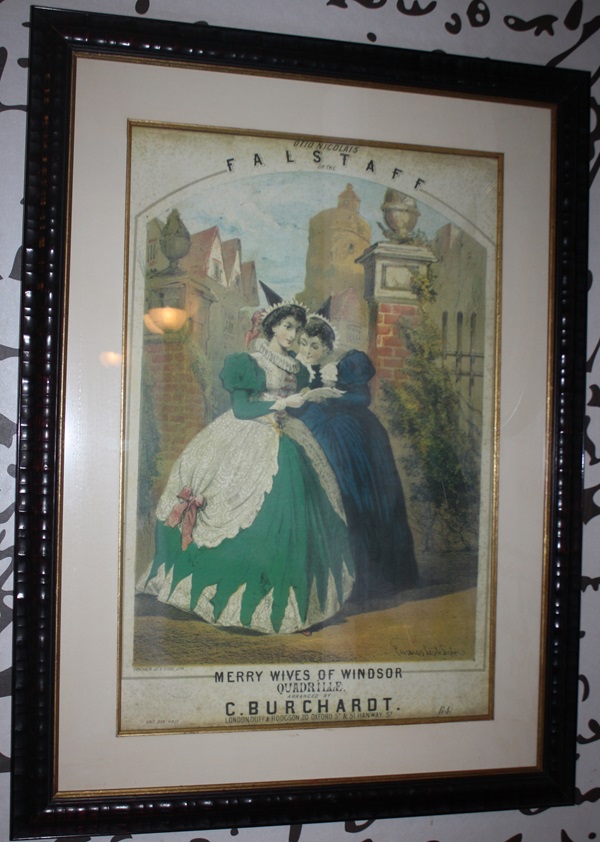
This poster advertised the operatic version of The Merry Wives of Windsor, created by Otto Nicolai.
A framed poster from Dibbin’s Theatre London.
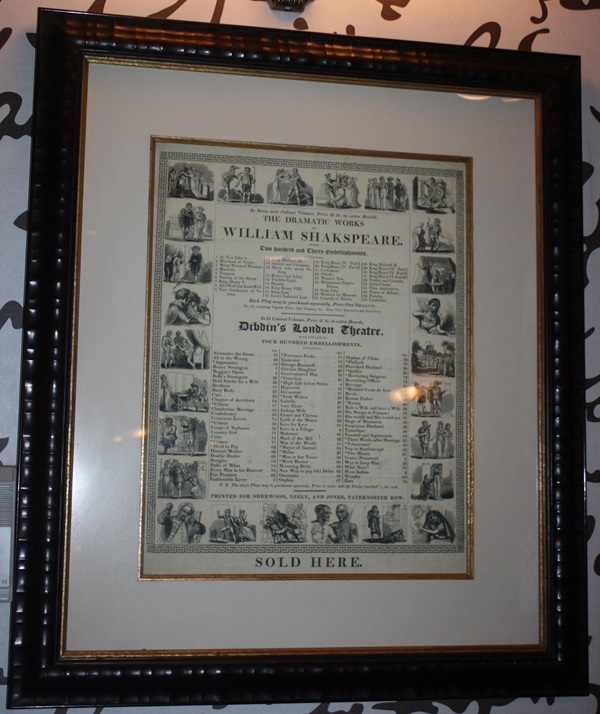
The poster was to promote the performances of William Shakespeare’s plays. Those include: Macbeth, Romeo and Juliet, Othello and Titus Andronicus.
A framed poster for A Midsummer Night’s Dream.
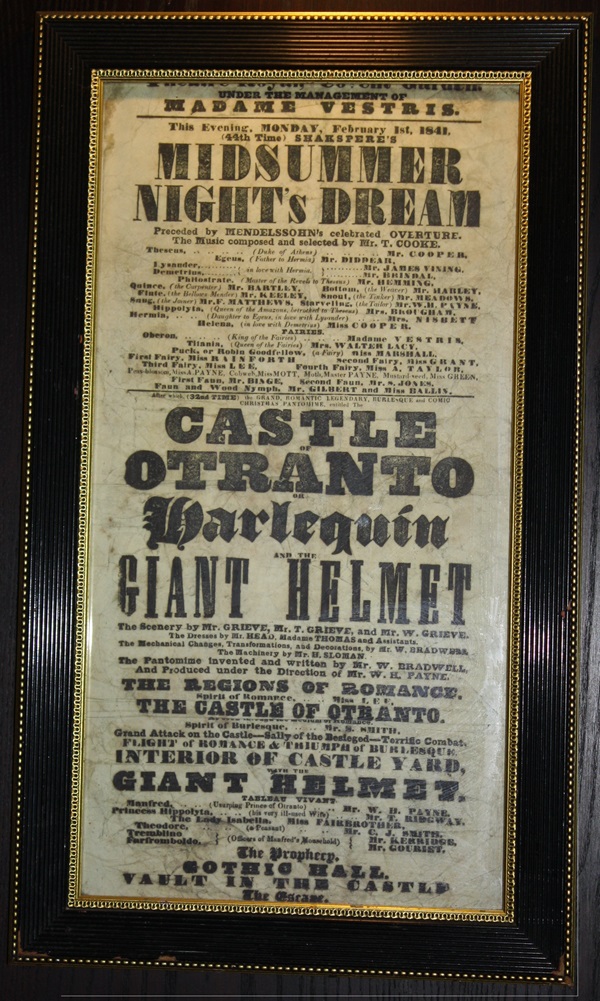
The poster advertised a performance of A Midsummer Night’s Dream from 1 February 1841. The theatre was managed by Madame Vestris.
Framed photographs of a performance of Romeo and Juliet.
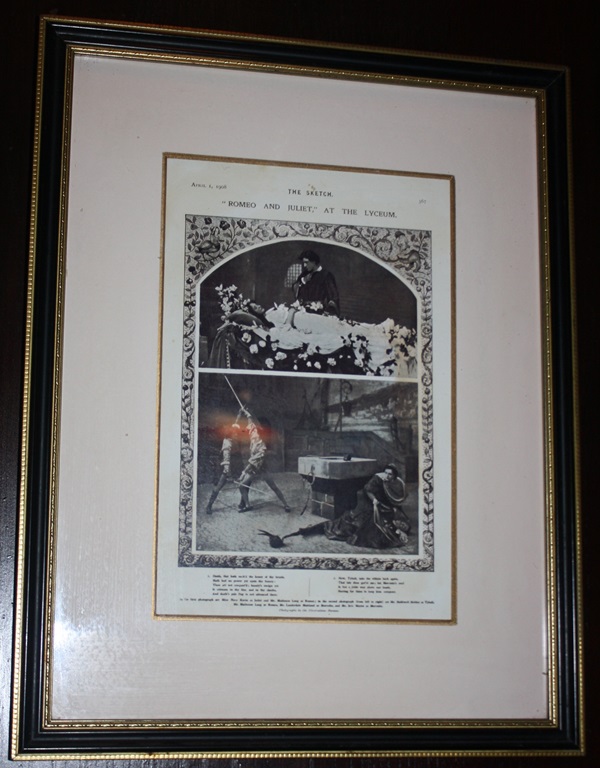
The photographs are featured in an edition of The Sketch magazine from 1 April 1908, showing two scenes from Romeo and Juliet at the Lyceum Theatre.
Framed paintings and text about Sir John Soane.
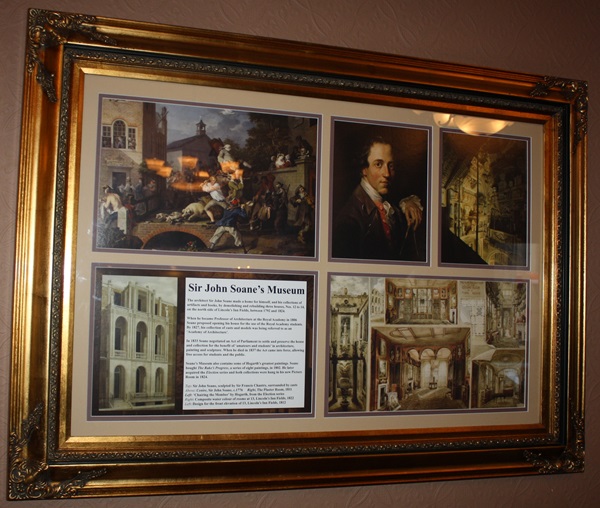
The text reads: The architect Sir John Soane made a home for himself, and his collections of artifacts and books, by demolishing and rebuilding three houses, Nos. 12 to 14, on the north side of Lincoln’s Inn Fields, between 1792 and 1824.
When he became Professor of Architecture of the Royal Academy in 1806 Soane proposed opening his house for the use of the Royal Academy students. By 1827, his collection of casts and models was being referred to as an ‘Academy of Architecture’.
In 1833 Soane negotiated an Act of Parliament to settle and preserve the house and collection for the benefit of ‘amateurs and students’ in architecture, painting and sculpture. When he died in 1837 the Act came into forces, allowing free access for students and the public.
Soane’s Museum also contains some of Hogarth’s greatest paintings. Soane bought The Rake’s Progress, a series of eight paintings, in 1802. He later acquired the Election series and both collections were hung in his new Picture Room in 1824.
Top: Sir John Soane, sculpted by Sir Francis Chantry, surrounded by casts.
Above: Centre, Sir John Soane, c.1779 Right, The Plaster Room, 1811
Left, ‘Chairing the Member’ by Hogarth, from the Election series
Right: Composite water colour of rooms at 13, Lincoln’s Inn Fields, 1822
Left: Design for the front elevation of 13, Lincoln’s Inn Fields, 1812.
Framed drawings and text about Charles Lamb and his sister Mary.
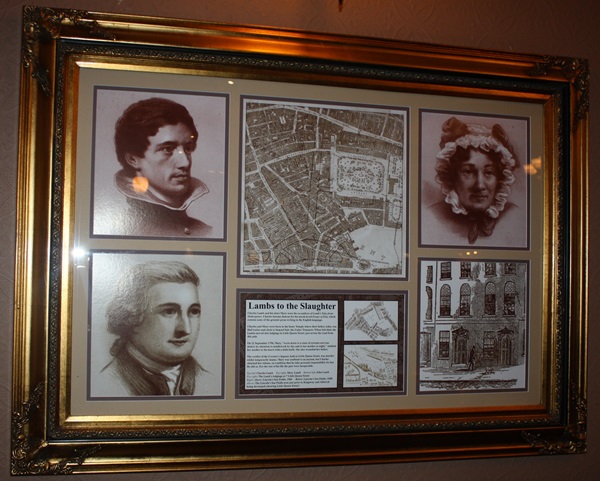
The text reads: Charles Lamb and his sister Mary were the co-authors of Lamb’s Tales from Shakespeare. Charles became famous for his much loved Essays of Elia, which contain some of the greatest prose writing in the English language.
Charles and Mary were born in the Inner Temple where their father, John, was Hall waiter and clerk to Samuel Salt, the Under Treasurer. When Salt died, the Lambs moved into lodgings in Little Queen Street, just across the road from this pub.
On 22 September 1796, Mary, “worn down to a state of extreme nervous misery by attention to needlework by day and to her mother at night,” stabbed her mother to the heart with a table knife. She also wounded her father.
The verdict of the Coroner’s inquest, held at Little Queen Street, was murder whilst temporarily insane. Mary was confined to an asylum, but Charles obtained her release, on condition that he take personal responsibility for her. He did so. For the rest of his life the pair were inseparable.
Top left: Charles Lamb Top right: Mary Lamb Bottom left: John Lamb
Far right: The Lamb’s lodgings at 7 Little Queen Street
Right: Above: Lincoln’s Inn Fields, 1560 Below: Lincoln’s Inn Fields, 1658
Above: The Lincoln’s Inn Fields area just prior to Kingsway and Aldwych being developed (showing Little Queen Street).
A hanging modern poster of King Henry the Fourth, Part 2.
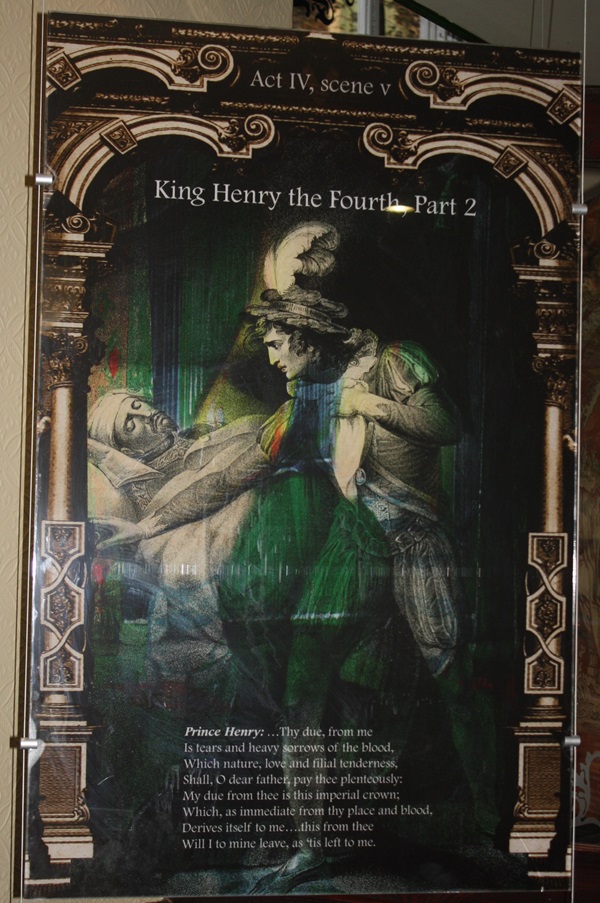
The poster is of Act IV, Scene V. The text reads: Prince Henry:… The due, from me is tears and heavu sorrow of the blood, which nature, love and filial tenderness, shall, O dear feather, pay thee plenteously: My due from thee is this imperial crown; which, as immediate from thy place and blood, Derives itself to me… this from thee Will I to mine leave, as ‘tis left to me.
A hanging modern poster of The Merry Wives of Windsor.
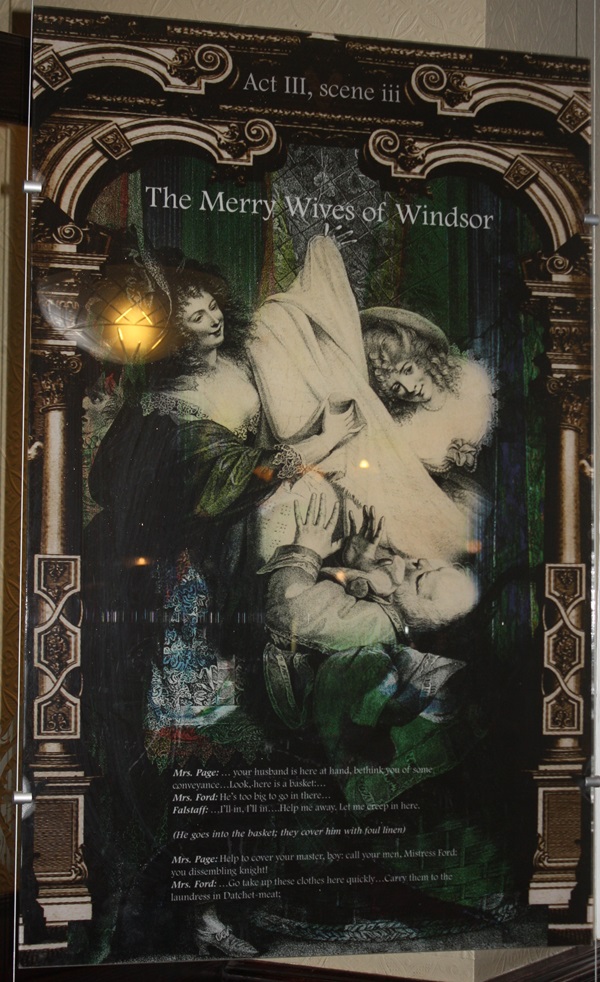
The poster is of Act III, Scene III. The text reads:
Mrs Page:… your husband is here at hand, bethink you of some conveyance… Look, here is a basket:…
Mrs Ford: He’s too big to go in there…
Falstaff:… I’ll in, I’ll in… Help me away, Let me creep in here.
(He goes into the basket; they cover him with foul linen)
Mrs Page: Help to cover your master, boy: call your men. Mistress Ford: you dissembling knight!
Mrs Ford:… Go take up these clothes here quickly… Carry them to the laundress in Datchet-meat.
A hanging modern poster of Macbeth.
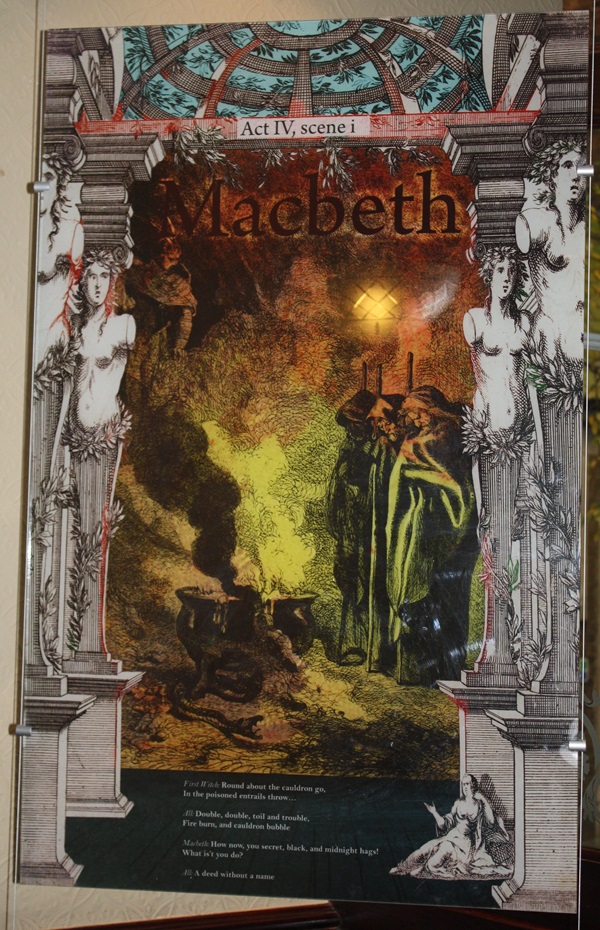
The poster is of Act IV, Scene I. The text reads: First Witch: Round about the cauldron go, in the poisoned entrails throw…
All: Double, double, toil and trouble, fire burn, and cauldron bubble.
Macbeth: How now, you secret, black, and midnight hags! What is’t you do?
All: A deed without a name.
A hanging modern poster of King Henry the Fourth, Part 1.
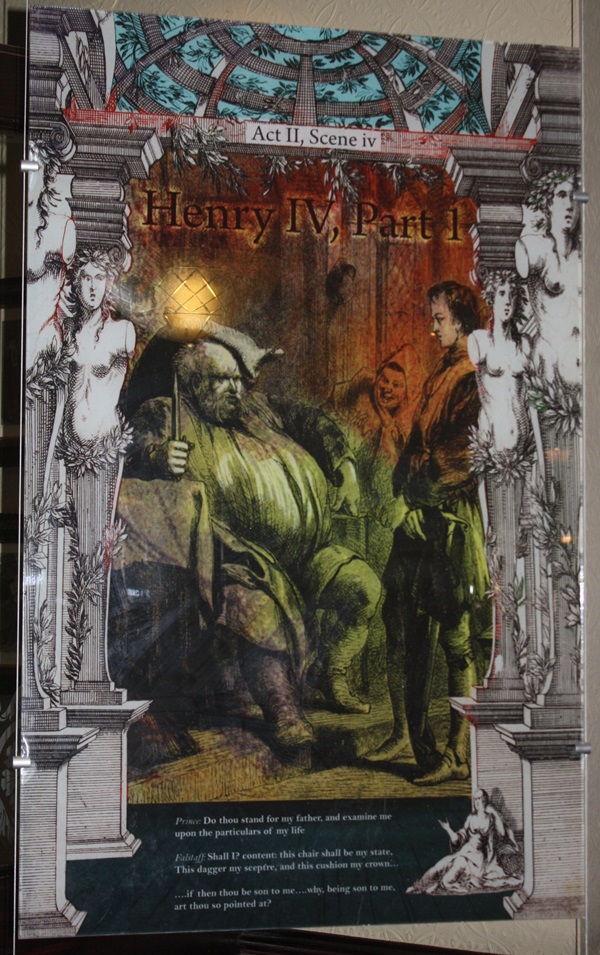
The poster is of Act II, Scene IV. The text reads:
Prince: Do thou stand for my father, and examine me upon the particulars of my life
Falstaff: Shall I? content: this chair shall be my state, This dagger my sceptre, and this cushion my crown…
…if then thou be son to me… why, being son to me, art thou so pointed at?
A statue of Shakespeare.
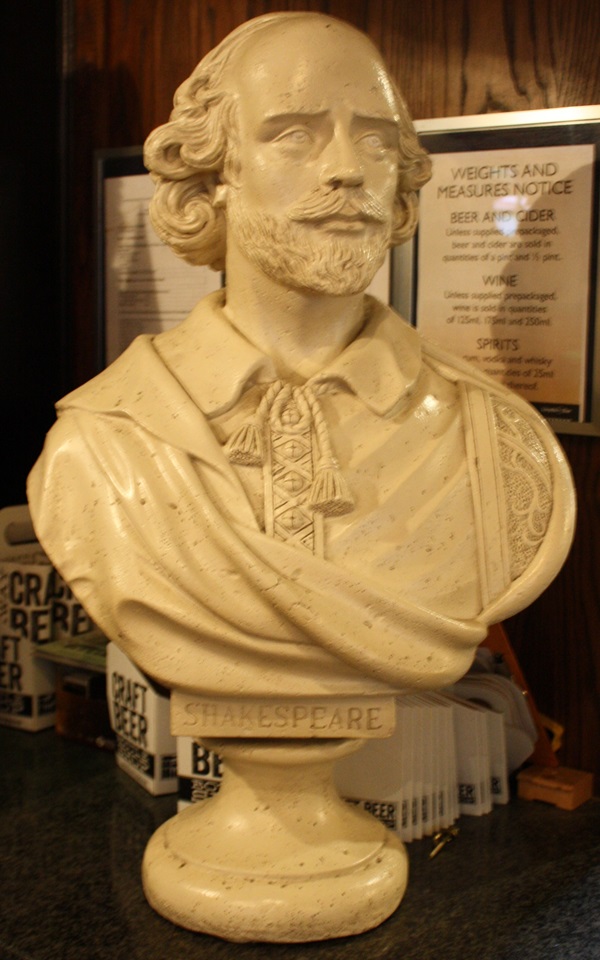
A portrait of Shakespeare on the pub’s hanging board.
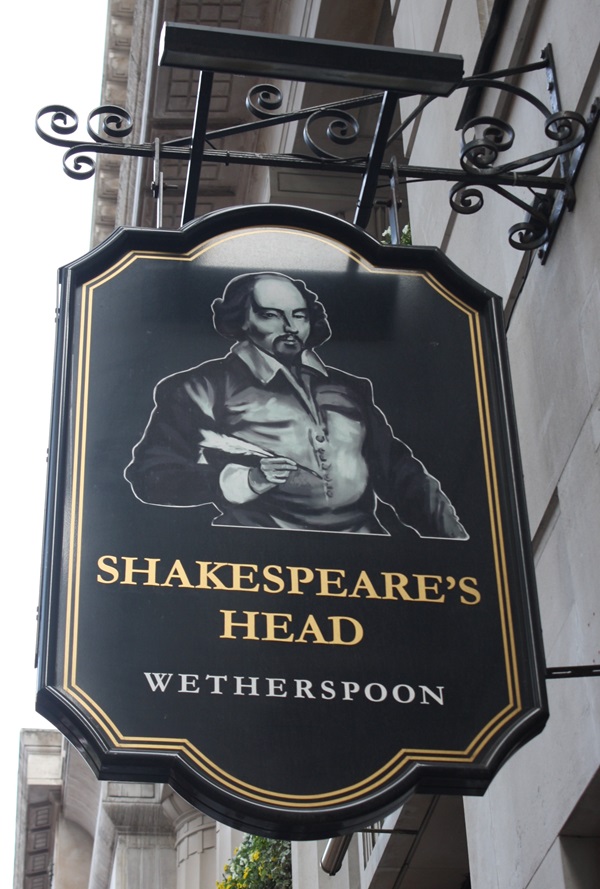
External photo of the building – front.
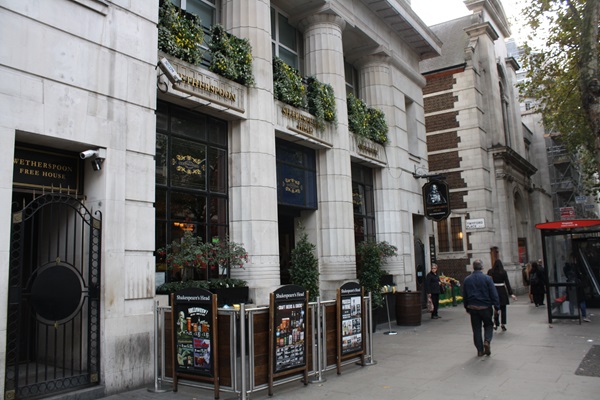
External photo of the building – main entrance.
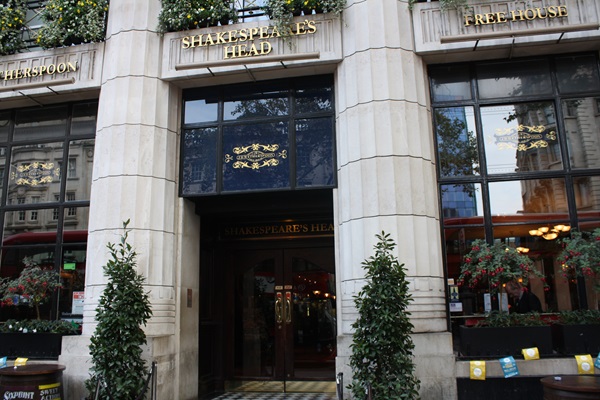
External photo of the building – side entrance.
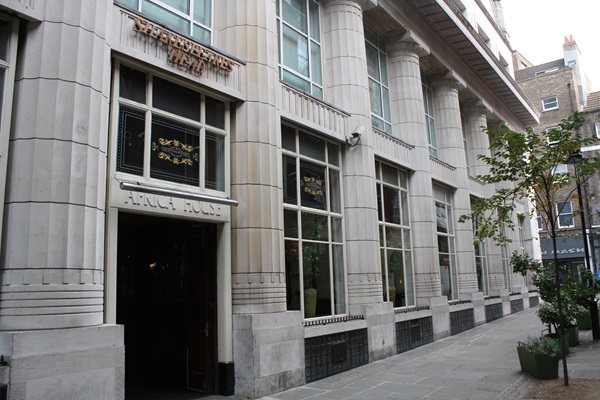
External photo of the building – Africa House.
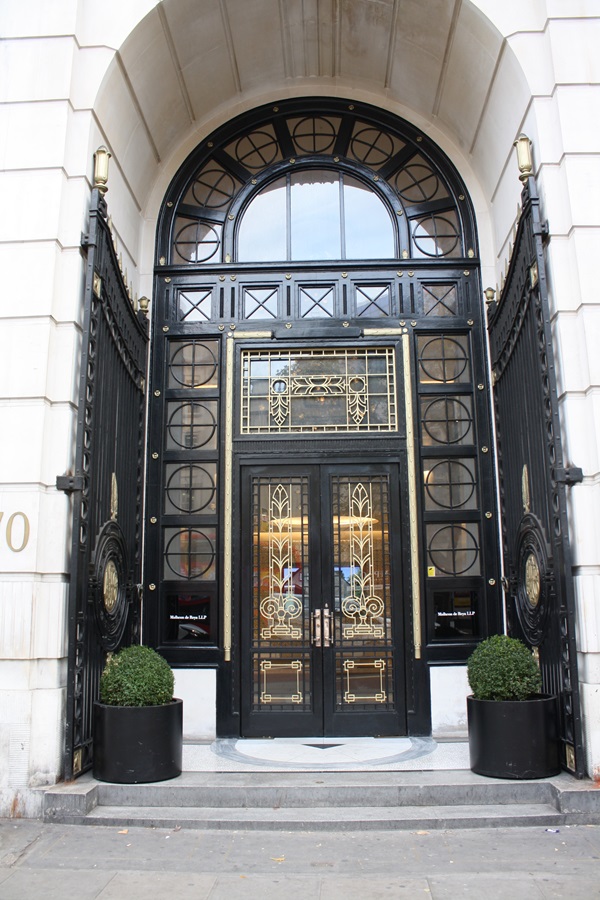
This is the main entrance to Africa House, built in 1921.
If you have information on the history of this pub, then we’d like you to share it with us. Please e-mail all information to: pubhistories@jdwetherspoon.co.uk